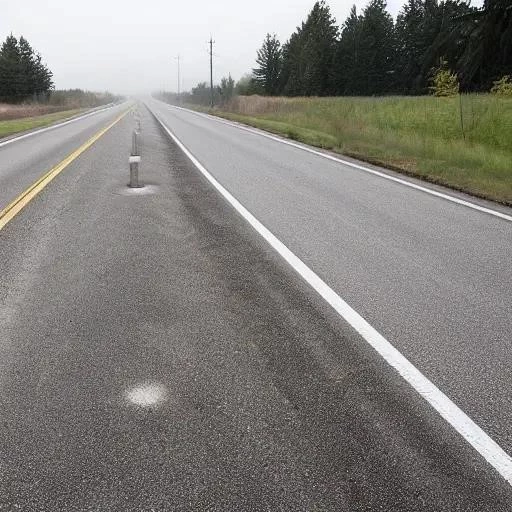The daily grind of urban commuting, a relentless battle against time and congestion, often feels like an insurmountable challenge. For millions, the dream of a smoother, faster journey remains just that – a distant, often frustrating, fantasy. Yet, hidden in plain sight on many of our busiest arteries, a powerful solution is already transforming lives and reshaping the very fabric of our metropolitan mobility. This isn’t merely about getting from point A to point B; it’s about reclaiming precious hours, reducing stress, and fundamentally altering our relationship with travel.
Enter the T3 lane, a remarkably efficient yet often misunderstood component of modern traffic management. Designed to incentivize carpooling and public transit, these dedicated corridors promise an expedited passage, dramatically shortening travel times for those who embrace shared mobility. But just how far can you truly travel in a T3 lane, and what profound impact do these specialized arteries have on the broader urban landscape? The answers lie at the intersection of innovative policy, smart infrastructure, and a collective commitment to a more sustainable future, offering a compelling vision of what’s possible when we rethink our roads.
Understanding T3 Lanes: Your Express Pass to Efficiency
| Aspect | Description |
|---|---|
| Definition | A High-Occupancy Vehicle (HOV) lane requiring a minimum of three (3) occupants in a vehicle for eligibility. These are a specific type of HOV lane, distinguished by their higher occupancy requirement. |
| Primary Purpose | To significantly reduce traffic congestion by encouraging carpooling and ridesharing, thereby promoting more efficient use of existing road infrastructure and reducing the total number of vehicles during peak hours. |
| Key Benefits | Significantly reduced commute times, lower individual fuel consumption and costs, decreased overall vehicle emissions contributing to improved air quality, and enhanced productivity for commuters who spend less time stuck in traffic. |
| Operational Characteristics | Clearly marked with distinctive diamond symbols on the pavement and prominent overhead signage. T3 lanes often have specific hours of operation (e.g., weekday rush hours) and are subject to strict enforcement mechanisms, including automated cameras and dedicated police patrols. |
| Related Concepts |
|
| Official Reference | Wikipedia: High-occupancy vehicle lane (Provides foundational knowledge on HOV lanes, of which T3 is a specific, advanced form.) |
The Mechanics of Momentum: Unpacking the T3 Advantage
The “how far” question isn’t solely about physical distance; it’s fundamentally about time and the opportunities it unlocks. In a T3 lane, a journey that might typically crawl for an hour in bumper-to-bumper traffic could be completed in a brisk thirty minutes. This incredible efficiency translates into substantial daily gains, effectively shrinking the perceived distance of a commute. Imagine traversing a 20-mile stretch of freeway, usually a notorious bottleneck, with the fluid ease of a dedicated express route. Transportation experts like Dr. Anya Sharma, an urban planner specializing in sustainable mobility, emphasize that “T3 lanes don’t just move cars; they move people more effectively, optimizing the existing infrastructure to its fullest potential and redefining the very concept of distance.”
This dynamic isn’t hypothetical; it’s a proven reality in metropolitan areas worldwide. From the bustling freeways of Los Angeles to the intricate networks of Toronto, cities are actively leveraging T3 and similar HOV systems to combat gridlock. Commuters, often navigating lengthy distances, are experiencing a palpable reduction in travel stress and a significant increase in personal time. This reclaimed time can be reinvested into family, hobbies, or even additional work, thereby enhancing overall quality of life and economic productivity. The visible speed differential between a T3 lane and its adjacent general-purpose lanes serves as a powerful, persuasive testament to its efficacy, encouraging more drivers to consider carpooling or utilizing public transit options that often share these privileged corridors.
Beyond the Lane: A Ripple Effect on Urban Life
The impact of T3 lanes extends far beyond individual commute times, creating a beneficial ripple effect across urban ecosystems. Environmentally, these lanes are incredibly effective in reducing the sheer number of single-occupant vehicles on the road, directly translating into decreased carbon emissions and improved air quality. Fewer idling cars mean less pollution, fostering healthier urban environments for everyone.
“It’s a virtuous cycle,” states environmental advocate Mark Harrison. “By incentivizing carpooling, we’re not just moving people faster; we’re actively contributing to a cleaner, greener city for future generations, paving the way for a more sustainable urban future.”
Economically, the gains are equally compelling. Reduced congestion means less wasted fuel and fewer late arrivals, boosting economic efficiency and worker productivity across various sectors. For businesses, a more predictable commute for their workforce translates into greater reliability and potentially lower operating costs. Socially, T3 lanes foster a culture of collaboration and community, encouraging individuals to connect and share rides, often leading to new friendships and a stronger sense of collective responsibility towards urban sustainability. The very act of sharing a journey, often overlooked in our individualistic driving culture, is quietly rebuilding connections within our communities.
Navigating the Future: Challenges and Innovations
While the advantages of T3 lanes are undeniable, their successful implementation and expansion are not without challenges. Enforcement remains a critical factor; ensuring only eligible vehicles utilize these lanes requires robust monitoring systems, from traditional police patrols to increasingly sophisticated automated camera technologies. Public education campaigns are also essential, clarifying eligibility rules and highlighting the broader societal benefits to foster widespread acceptance and compliance. By integrating insights from AI-driven traffic management systems, authorities are proving incredibly effective in optimizing lane usage and even introducing dynamic pricing models, transforming some T3 lanes into High-Occupancy Toll (HOT) lanes during peak hours, further managing demand and revenue generation.
Looking forward, the evolution of T3 lanes is deeply intertwined with the advent of autonomous vehicles (AVs). As self-driving technology matures, cities are actively exploring how AVs, particularly shared autonomous vehicles, could utilize these dedicated corridors to maximize efficiency and safety. Imagine a future where fleets of driverless pods, seamlessly coordinating their movements, whisk commuters along T3 lanes at optimal speeds, further blurring the lines between private and public transport. This forward-looking approach promises to unlock even greater potential from our existing infrastructure, creating truly smart, responsive urban mobility networks capable of adapting to future demands.
Paving the Way: Global Success Stories
Across the globe, numerous cities offer compelling blueprints for the power of dedicated lanes. In the Washington D.C. metropolitan area, the I-66 Inside the Beltway has successfully transitioned from a traditional HOV-2 to a dynamic HOT lane system, demonstrating how managed lanes can adapt to evolving traffic demands while still prioritizing high-occupancy vehicles. Similarly, in California, the extensive network of HOV lanes, including those with T3 requirements in specific congested zones, consistently proves its value by providing significantly faster travel times for carpoolers, even during the most challenging rush hours. These examples, meticulously studied by urban planners and transportation engineers, underscore the universal applicability and profound benefits of such forward-thinking infrastructure investments, inspiring other regions to follow suit.
Unlock Your Commute’s True Potential
The journey through a T3 lane is more than just a faster route; it’s a symbolic passage into a more efficient, sustainable, and connected urban future. By embracing shared mobility and leveraging these intelligently designed corridors, we collectively contribute to alleviating congestion, protecting our environment, and reclaiming valuable time. The surprising distances you can conquer aren’t just measured in miles, but in moments saved, stress reduced, and a renewed sense of possibility for our daily lives. As cities continue to grow, the strategic expansion and innovative management of T3 lanes will undoubtedly remain a cornerstone of our collective quest for truly optimized urban travel.

